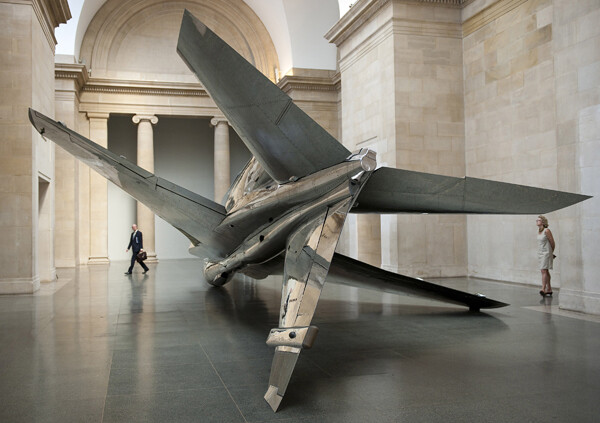Categories
Subjects
Authors
Artists
Venues
Locations
Calendar
Filter
Done
January 14, 2021 – Review
Lynette Yiadom-Boakye’s “Fly in League with the Night”
Caleb Azumah Nelson

In the foyer outside Lynette Yiadom-Boakye’s exhibition, a question is written on the wall. “What sounds can you hear when you look at the paintings?” Music spills from a hidden speaker; Miles plays. I can hear the way he held his horn, so closely attuned to the spaces he could inhabit within a melody, perhaps looking for a nod from his band, or, more likely, improvising, always improvising. Feeling rather than knowing.
When I enter the space, it is quiet. The music has stopped, but looking at the paintings around me I still hear Miles and Bill and Gil, Fela and Ebo, Solange and D’Angelo: the music Yiadom-Boakye had playing in the studio when painting. A tradition of rhythm rendered on canvas in blues and greens, yellows and reds. In this way, it is possible to see something and to hear it too, and I wonder if this is what feeling is.
What I do see: Black figures, in all manner of poses and activities, caught in private moments. They tease and taunt, they are in repose, they squat, they crouch, they hurt, they ache, they joy. They are quiet but never silent. In Later or Louder or Softer or Sooner …
September 11, 2019 – Review
Mike Nelson’s “The Asset Strippers”
Jeremy Millar

The relationship of sculpture to industry and its processes is a long one, and heroic—think of all those bronze figures emerging from armory foundries, of Marcel Duchamp and Constantin Brancusi wandering jealously through the 1912 Paris Aviation Show, of Richard Serra rolling steel at a Baltimore shipyard—but seldom is it elegiac. Such a description would however be fitting for The Asset Strippers (2019), an extraordinary installation of sculptures by Mike Nelson. The work has been assembled from machinery and industrial materials and fixtures bought from auctions disposing of the assets of UK factories, although Nelson does not simply turn the expanse of Tate Britain’s Duveen Galleries into a storehouse, but rather places them in new configurations. Despite the technical difficulties of moving these massive objects—their total weight is estimated to be approximately 40–50 tons, close to the loading capacity of the gallery floor—Nelson’s touch is assuredly light. Often little more is done than stacking objects on top of each other—a cement mixer is placed high upon two wooden work benches, its drum upturned as if yearning to peer even higher—but the effect is transformative. One begins to see them not only for what they once were, but for what else …
July 21, 2010 – Review
Fiona Banner’s "Harrier and Jaguar" at Tate Britain
Aoife Rosenmeyer

Plucked from the sky, a Sea Harrier and a Sepecat Jaguar jet have fallen to earth in Tate Britain. It’s the work of Fiona Banner, and in an average summer critics would be busy drawing tidy parallels between the work and the UK’s ongoing military involvement in overseas conflicts. But these current affairs were overshadowed instead by a kerfuffle sparked when arts practitioners criticised the Tate’s sponsorship by BP in the Guardian newspaper on the day of the opening. As I approached the galleries a few days later, the high-pitched argument was ringing in my ears: critic Jonathan Jones had written that given impending cuts in cultural funding, ‘if they [museums] can get money from Satan himself, they should take it’; ‘art will sell its soul, surrender all moral integrity’ countered artist activist John Jordan the next.
As it turns out, Banner’s machines are so seductive it is well nigh impossible to feel any self-righteous anger, be it directed toward BP, activists or tub-thumping columnists. In one gallery, the entire Sea Harrier is suspended from its tail, nose hovering above the floor. By painting a dark beak onto the nose and light feather markings on its wings Banner has changed its …